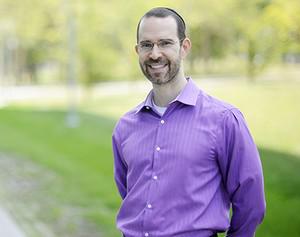Disaster recoveryRecovering from disasters: Social networks matter more than bottled water and batteries
Almost six years ago, on Friday, March 11, 2011, Japan faced a paralyzing triple disaster: a massive earthquake, tsunami, and nuclear meltdowns that forced 470,000 people to evacuate from more than 80 towns, villages and cities. My colleagues and I investigated how communities in the hardest-hit areas reacted to these shocks, and found that social networks - the horizontal and vertical ties that connect us to others - are our most important defense against disasters. As communities around the world face disasters more and more frequently, I hope that my research on Japan after 3/11 can provide guidance to residents facing challenges. While physical infrastructure is important for mitigating disaster, communities should also invest time and effort in building social ties.

Author Daniel Aldrich // Source: northeastern.edu
Standard advice about preparing for disasters focuses on building shelters and stockpiling things like food, water and batteries. But resilience — the ability to recover from shocks, including natural disasters —- comes from our connections to others, and not from physical infrastructure or disaster kits.
Almost six years ago, Japan faced a paralyzing triple disaster: a massive earthquake, tsunami, and nuclear meltdowns that forced 470,000 people to evacuate from more than 80 towns, villages and cities. My colleagues and I investigated how communities in the hardest-hit areas reacted to these shocks, and found that social networks - the horizontal and vertical ties that connect us to others - are our most important defense against disasters.
The 2011 catastrophe
At 2:46 pm on Friday, March 11, 2011, a massive 9.0 earthquake struck off Japan’s northeastern coast. The quake was bigger and lasted longer than the hundreds of quakes which rattle the nation annually, but did little damage to homes and businesses. Unfortunately, however, the danger was far from over.
Within 40 minutes massive waves of water, some as high as six stories, smashed down on coastal communities in the Tohoku region in northeastern Japan. Some 18,500 lives were lost, primarily to the tsunami.
Damage from the earthquake and tsunami shut down the cooling systems at the Fukushima Daiichi nuclear power plants 1 through 3, which experienced nuclear fuel meltdowns. Over 160,000 people were forced to evacuate from Fukushima prefecture. The radiation exclusion zone initially covered more than 5,400 square miles, but has slowly decreased as decontamination efforts have progressed.
In total, more than 470,000 people evacuated during the disaster. The nuclear accident paralyzed national politics, made many survivors anxious and depressed, and changed the landscape of energy policy in Japan by pushing local residents to pursue non-nuclear options. Many communities have started electricity cooperatives where they use geothermal, solar and wind to produce their power.
What saved lives during the tsunami?
A Japanese colleague and I hoped to learn why the mortality rate from the tsunami varied tremendously. In some cities along the coast, no one was killed by waves which reached up to 60 feet; in others, up to ten percent of the population lost their lives.
